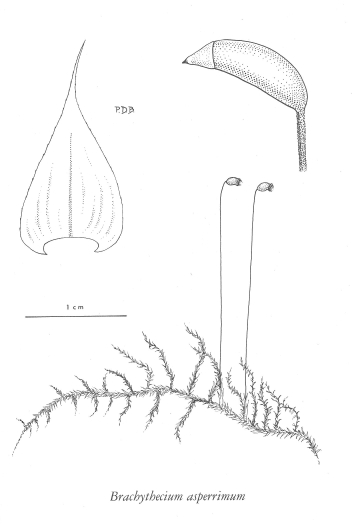E-Flora BC: Electronic Atlas of the Flora of British Columbia
Brachythecium frigidum (Mitt.) Sull.
golden short-capsuled moss (cold brachythecium moss) Brachytheciaceae Species Account Author: Wilf Schofield Extracted from Some Common Mosses of British Columbia Introduction to the Bryophytes of BC
|
||||||||||||||

